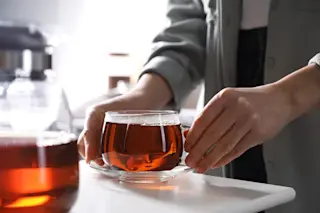Photo credit: Jun OHWADA (しそ山葵) (june29/Flickr) Wasabi packs quite a punch, but where exactly does that wallop of heat come from? That green dollop that accompanies sushi comes from the wasabi plant, also known as Japanese horseradish, which is not to be confused with its distant cousin, the more common and well-known European horseradish (Armoracia rusticana). As a member of the Cruciferae family, wasabi is actually more closely related to cabbage, cauliflower, broccoli, and mustard [1][2]. Grown primarily in Japan, the wild-type species (Wasabia tenuis) are only found mountainside in streambeds and river sand bars [2]. Cultivated wasabi plants (W. japonica), similar to the wild-type variety, comprise a cluster of long-stemmed heart-shaped leaves and delicate, spring-blooming, white flowers branching from a gnarled, thick, root-like stem known as a rhizome [3]. Wasabi grown under semi-aquatic conditions are called sawa, while those grown in fields are called oka [1][3]. Sawa is considered ...
Wasabi
Discover the complex flavor of real wasabi and how it differs from common substitutes like horseradish. Taste matters!
More on Discover
Stay Curious
SubscribeTo The Magazine
Save up to 40% off the cover price when you subscribe to Discover magazine.
Subscribe













